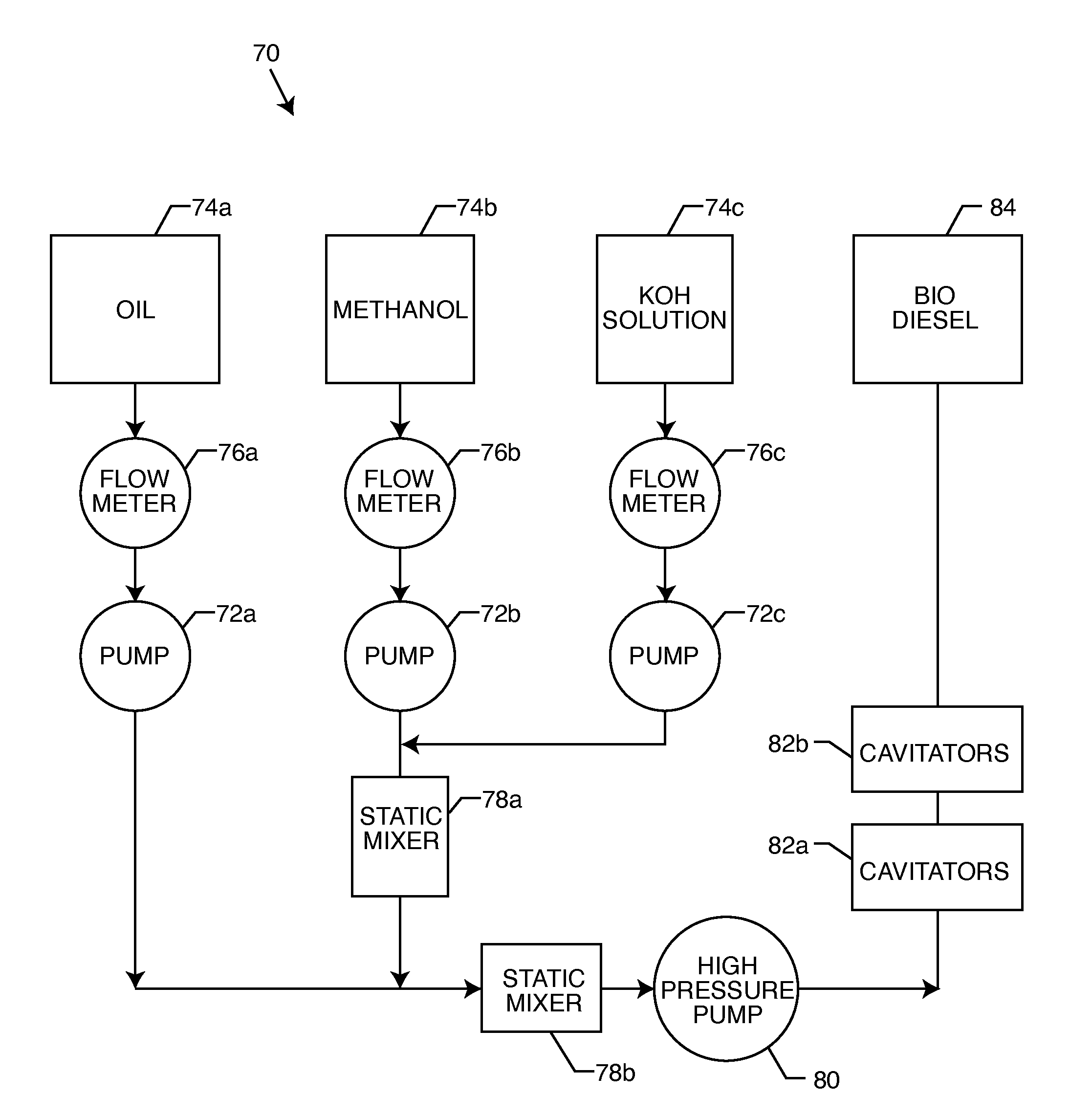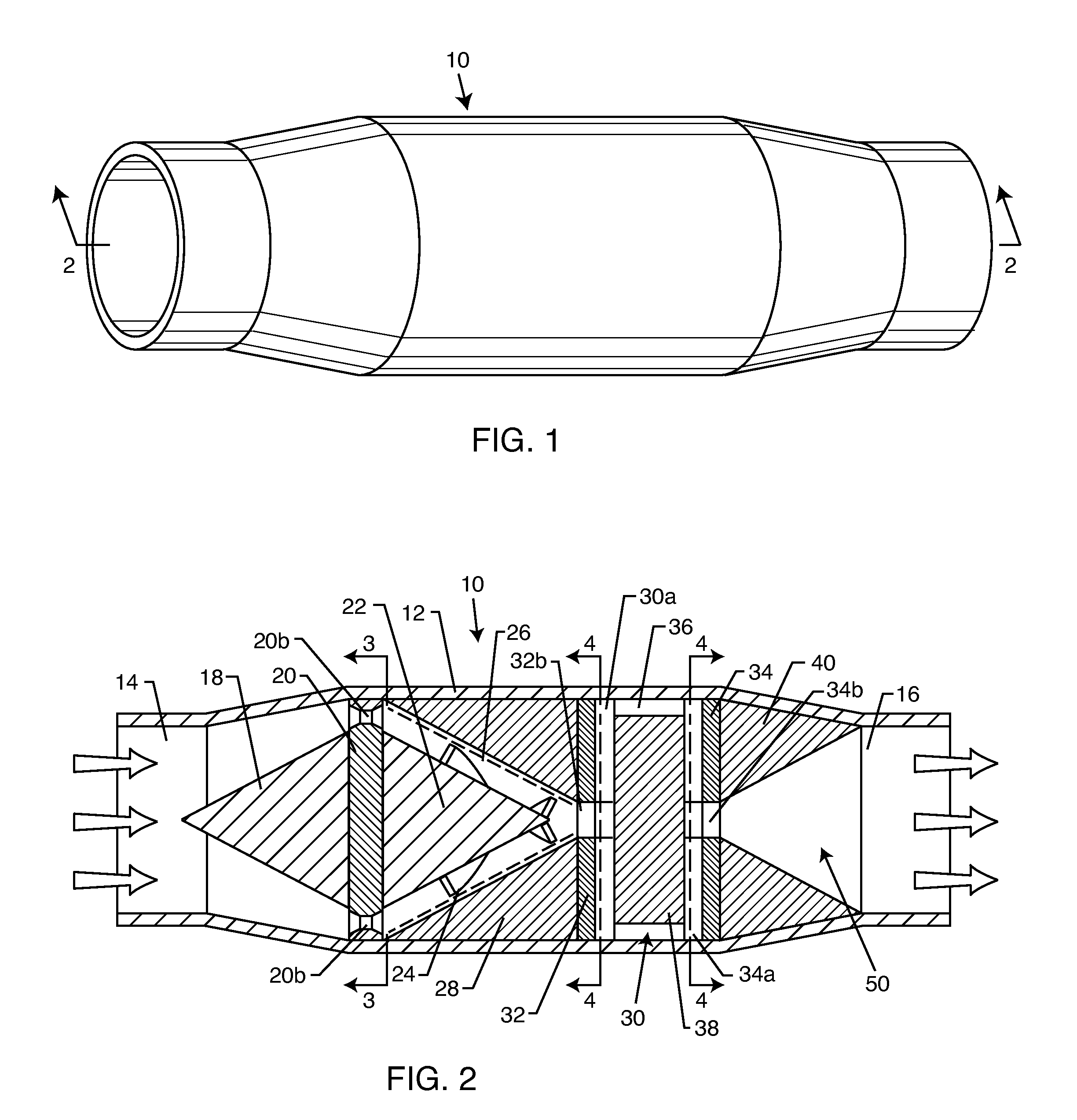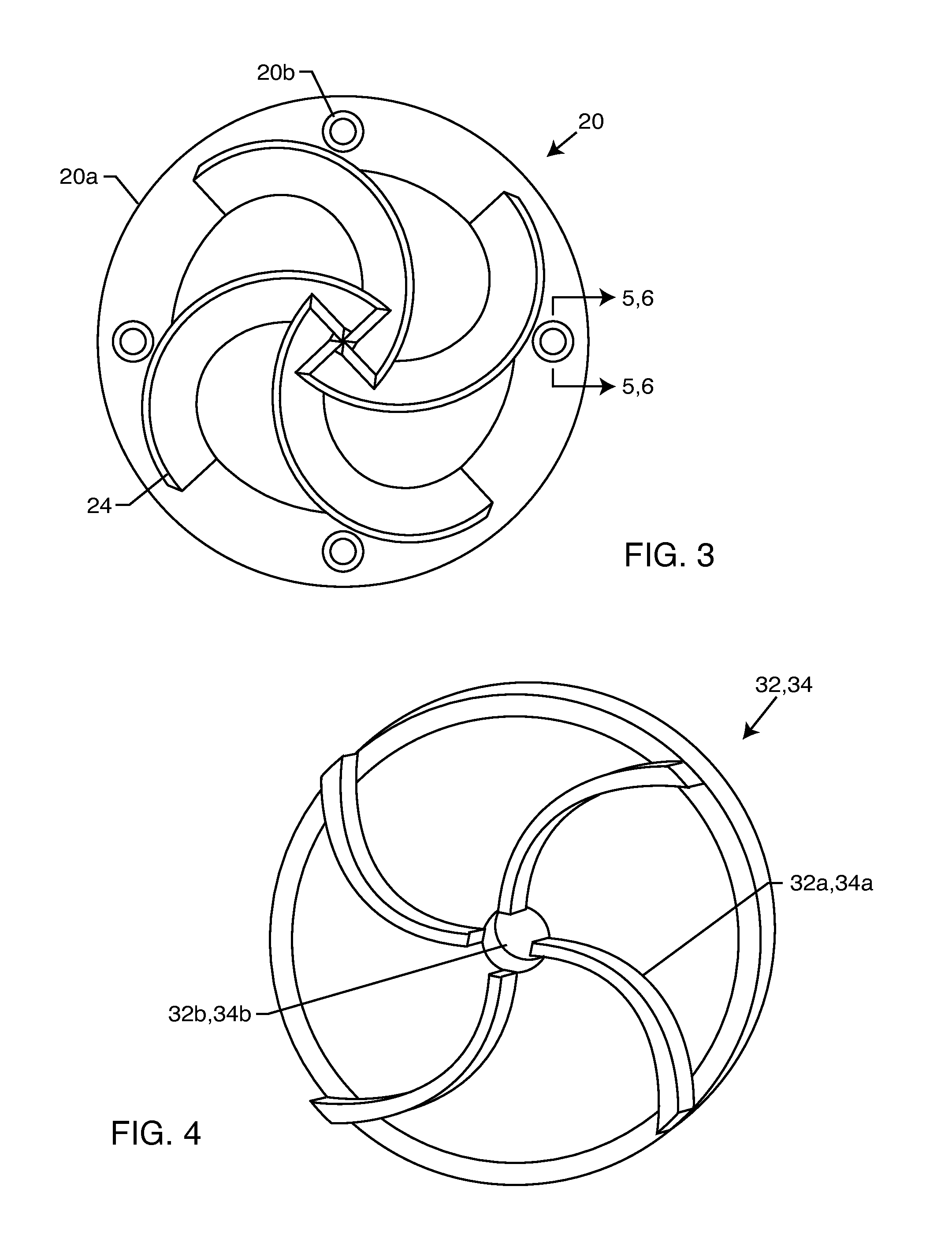Process for producing biodiesel through lower molecular weight alcohol-targeted cavitation
a biodiesel and alcohol-targeted technology, applied in the direction of fatty acid chemical modification, fatty-oil/fat refining, fatty substance recovery, etc., can solve the problems of saponification, reducing the yield of soap stock, and requiring significant energy input in the process, so as to reduce the fluid pressure, and reduce the fluid pressure
- Summary
- Abstract
- Description
- Claims
- Application Information
AI Technical Summary
Benefits of technology
Problems solved by technology
Method used
Image
Examples
Embodiment Construction
[0044]The present invention is directed to a device and method for processing a fluidic reaction mixture via a hydrodynamic cavitation process with the result being the creation of new products. The reaction components inside the apparatus are influenced by pressure impulses and other features of controlled advanced hydrodynamic cavitation. The device and method herein described follows the aforementioned chemical reactions and processes such that the device stimulates cavitation in hydrodynamic liquids to the point where the end result is increased yield and quality of products.
[0045]With reference to the attached drawings, FIGS. 1-6, a method and device for the creation of cavitation processes in fluid flows resulting in localized regions of increased pressure, heat release and vigorous mixing to generate changes in fluids are disclosed. The method and device include the use of a flow-through hydrodynamic multi-stage cavitation reactor to promote chemical and physical processes an...
PUM
| Property | Measurement | Unit |
|---|---|---|
| pressures | aaaaa | aaaaa |
| temperature | aaaaa | aaaaa |
| methanol boiling point | aaaaa | aaaaa |
Abstract
Description
Claims
Application Information
 Login to View More
Login to View More - R&D
- Intellectual Property
- Life Sciences
- Materials
- Tech Scout
- Unparalleled Data Quality
- Higher Quality Content
- 60% Fewer Hallucinations
Browse by: Latest US Patents, China's latest patents, Technical Efficacy Thesaurus, Application Domain, Technology Topic, Popular Technical Reports.
© 2025 PatSnap. All rights reserved.Legal|Privacy policy|Modern Slavery Act Transparency Statement|Sitemap|About US| Contact US: help@patsnap.com



